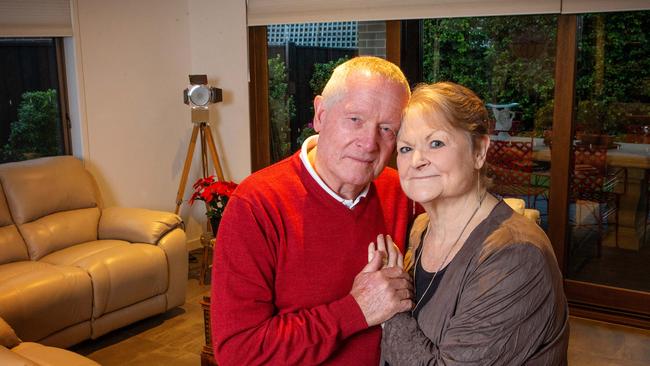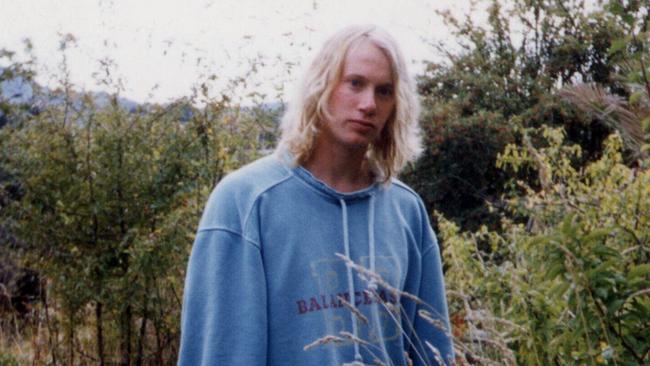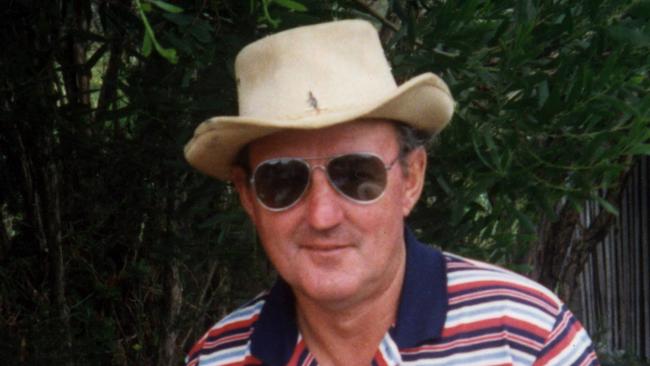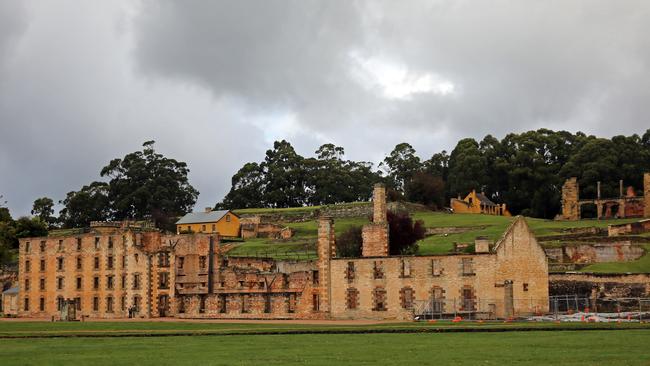On the anniversary of the Port Arthur massacre, the Fidler family recall the horror
Gaye and John Fidler only survived the massacre because gunman Martin Byrant thought they were already dead.

Patrick Carlyon
Don't miss out on the headlines from Patrick Carlyon. Followed categories will be added to My News.
In the moment when someone stands over you with a loaded gun, and you are smeared in the blood and body matter of your dead friends, the rest of your life gets rewritten in ways beyond your control.
Gaye Fidler and her husband John survived this moment. They have fared better than many other survivors of the Port Arthur massacre. For them, and this is unusual, the threat of violent death has come to heighten the joys and dim the fears.
The real Port Arthur toll was much higher than the official number of 35 deaths. Over 25 years, there have since been suicides and suicide attempts.
Some survivors have died of cancer, and Gaye wonders if trauma brings on the illness. Many have shrunk from friends and support, as if part of them did die in 1996.
The Fidlers have confronted earthquakes, bushfires, floods, cancer, fatal accidents and that dreadful afternoon in Tasmania. But tragedy is not their story. They trust in the best. Their lives are complete.

With the clearest of lenses, it helps them to recall the inexplicable horror of Port Arthur. John, at 80, wants his grandchildren to know what happened that day. He wants everyone to remember. For the Fidlers, to talk about Port Arthur is to recover from it.
The Doreen couple were hunted on April 28, 1996. They lived only because the killer thought they were already dead.
Over a three-hour lunch, and a bottle of sav blanc, they polish one another’s recollections, debating this or that fact. Afterwards, Gaye sends through her life story, an unpublished book of 122,000 words, in which the moments are described in unflinching detail.
They were sitting, with four friends, at a table in a far corner of the Broad Arrow Café. Four more friends arrived and stood alongside, chatting about plans for the rest of the day.
Gaye thought the first gunshot was a balloon being popped. But the bang was too loud. Had something exploded in the kitchen? Like others, in the blur of microseconds, she thought it might be a re-enactment.
Her view was blocked. John turned and faced the shooter, Martin Bryant, and they locked eyes.
“No, no, not here,” said a man, who was shot with a single bullet.
The Fidlers’ friend, Kevin Sharp, was killed next. His body fell on top of the other man.
His brother Ray and Wally Bennett were killed with one bullet.
Gaye was hit by shrapnel. John was grazed across the forehead, by a bullet that was probably aimed at him.
He pushed Gaye under a table. “Oh, the man behind me hasn’t got a head,” she said, and was told to “shut up”.
No one screamed. Each bang was another life lost.
The sound of Bryant’s footsteps receded to the souvenir shop. Then he returned.
Bryant stood over John. The Fidlers waited to die, like cornered animals. John had enough time to accept his death, though he would miss his loved ones. Gaye froze, eyes shut, as if her body shut down to survive.
Bryant stood there for six seconds, the future of the Fidlers hanging on murderous whim. Bryant walked to the door, reloaded, and didn’t come back.

In 15 seconds, he had killed 12 people. In 90 seconds, he had killed 20 and seriously wounded 12.
The Fidlers had seen a girl escape through a side entrance. They stepped over seven bodies to get there. Gaye noticed that the face of their dead friend Wally had not been blown away.
Outside, they hid in front of a car. Shots echoed from the nearby bus bays. They crouched behind the information centre, and a passer-by hoisted Gaye up a 10-foot embankment.
Hidden in thick undergrowth, Gaye felt the same terror of the cafe. They climbed a barbed wire fence, then saw a yellow Volvo driving up the road. Gaye figured it was help; shots from the car warned them that it was the cafe killer.
They hid for an hour. Gaye shook and dry-retched. They saw other survivors walking about, but they feared the killer’s return when they emerged from the bush.
A man shot in the back staggered about. A woman sat, covered in blood. Everything seemed so loud.
The couple spoke to a staff member, Sue Burgess, who said: “My daughter’s in there. She’s dead.” A young man told Gaye that his wife was dead.
The dead women were shop assistants from whom Gaye had bought a pencil and cup. They had been sweet and chatty. Their deaths would haunt John in coming months. Why couldn’t he save them?
He queued for the phone to ring the children. Their daughter Lindy wouldn’t believe that her mother was alive until she heard her voice.

THEN, as now, Gaye wanted the moment remembered. She asked an elderly couple with a video camera to film what was happening.
Gaye went to the bathroom to change, standing on the toilet seat in case the killer returned. She had no information about Bryant’s whereabouts.
The survivors resembled a “a scene from Auschwitz”. They walked up the hill, following orders, like “sheep one after the other”.
Gaye closed the curtains in the motel dining room. She felt dreadfully exposed to another attack from the darkness outside.
Back in Hobart, the Fidlers showered, then showered again. The next morning, they went to hospital for John’s back wound. As she was being X-rayed, Gaye was told that Bryant had been caught. He was to be X-rayed after her, and the terror of his proximity exploded within her again.
On arriving back in Melbourne, John went to see Premier Jeff Kennett. He didn’t have an appointment; Kennett’s assistant tried to turn him away. Instead, John and Kennett chatted for about 40 minutes.
“The Premier was the only person I could think of with the power and position that could help me to get things done — like the banning of guns in some way or other,” John says.
“I just couldn’t let three of my mates be murdered and not try to do something about it … I wanted him to see me in the shocked, dirty, emotional condition I was in.”
The Fidlers would attend 27 funerals in three years of the mid to late 1990s. Gaye lost her son, father, mother and brother in this time. The couple lost three of their dearest friends at Port Arthur.
THERE were many touchstone moments in the days and years ahead. Building blocks when the trauma and grief were shared.
The first green shoot was a month or two later when the Fidlers hosted survivors at their holiday home at Lake Eppalock. About 60 turned up, some with picnics, some with barbecues.
It wasn’t in a church or a park. The religious and counselling overtures in those first months had offered little comfort.
People exchanged details of where they were in the cafe. There were tears and laughter. These people understood one another, and understanding was something many of them felt was missing.
Gaye and John were charges 13 and 14 against Bryant in the murder case against him. They both wanted to go to the trial.
It was seven months after the massacre, and hypervigilance was one symptom of many. When the Fidlers went for dinner with fellow survivors, all four went to sit on the one restaurant seat that faced the door.
John wanted to eyeball the unarmed killer.
“I’m just going to sit there and look at the arsehole when he hasn’t got a gun in his hand,” he thought.
Those days helped, he now says, to see what a “pathetic person” he was.
The Fidlers made the bold decision to revisit the Broad Arrow Café. Sixteen survivors swarmed to where they had been when the shooting began.
The Kellys went to the souvenir shop, where they had hidden behind an upturned table.
Carolyn Loughton lay on the floor where her daughter Sarah, 15, had died in her arms.
“Show me where you were,” she asked the others.
Sad family anniversaries loomed a few months later, and Gaye fell down. John, who ran his own business, raced home when she told him that she wished she had died at Port Arthur. She was treated for depression and steadied.
John struggled with going to work each day. He was helped when the psychiatrist questioned how he was supposed to save anyone when there were 17 shots in 15 seconds.
The remembering is part of the coping. Gaye met the fathers of some victims of the Dunblane massacre, a Scottish school attack a month before Port Arthur.
She fought to preserve the cafe site from demolition. The Fidlers have revisited six to eight times, and taken grandchildren along with them.
John finds himself telling them that shooting scenes in movies are not true to life. Young people need to know what happened, but also recognise that the wholesale horror cannot happen again in Australia.

GAYE is a walking compendium of knowledge. There are no secrets, from the death of her son Garry three years before Port Arthur, to the loss of dear friends through trauma.
She has just spent three weeks in hospital, but you wouldn’t know it. It’s hard to refuse when she offers you a glass of wine. She’s the person who, hobbling on two crutches, once persuaded then Prime Minister Malcolm Turnbull to donate $50,000 from his own pocket to charity.
Fiercely loyal to those who have helped, from prime ministers to nurses, you expect she will succeed in her long search to find and thank the psychiatrist who “saved our lives”.
John boasts a considered eloquence which hints of twinkle and wit. He doesn’t go to funerals anymore; instead, he signs the book and waits outside.
When he cries with affection for his granddaughter, Gaye pokes fun at him, with the knowing bond of 50 years together as a team.
Their life is golf and grandkids, friends and family. Anger and fear has been subsumed by acceptance. Survivor’s guilt, as John felt, has been replaced by the sense of luck and gratitude. They do not fear death, as they once might have. Every day is a bonus.
Both Fidlers are thrown back in time by shootings in the United States. At these times, 25 years feels like yesterday. But they cope, they say, by looking forwards rather than back.
Their founding membership of the Alannah and Madeline Foundation brought friendships with well-known people and a sense of accomplishment.
“We’re here for history,” Gaye says. “We’ve got nothing to complain about. We’ve got each other.”
patrick.carlyon@news.com.au





